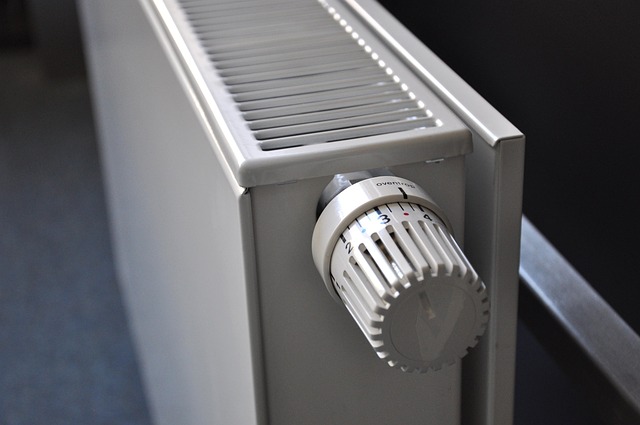Fan Heaters 2025: Fast, Efficient, and Affordable Comfort for Every Home
Fan heaters have become an essential heating solution for millions of households seeking quick warmth and energy efficiency. These compact appliances combine powerful heating elements with built-in fans to circulate warm air rapidly throughout rooms, making them ideal for spot heating and supplemental warmth. With advancing technology and improved energy efficiency ratings, modern fan heaters offer reliable comfort while maintaining affordability for budget-conscious consumers.

When winter temperatures drop, having an efficient heating solution becomes crucial for maintaining comfortable indoor environments. Fan heaters represent one of the most practical and cost-effective options available, delivering immediate warmth through innovative heating technology that combines traditional heating elements with air circulation systems.
Why Choose a Fan Heater?
Fan heaters offer several compelling advantages over traditional heating methods. Their primary benefit lies in rapid heat distribution, as the integrated fan pushes warm air throughout the room within minutes of activation. Unlike radiant heaters that only warm objects directly in front of them, fan heaters create convection currents that heat entire spaces more evenly.
These units excel in energy efficiency when used for targeted heating. Rather than heating an entire house, users can warm specific rooms as needed, potentially reducing overall energy consumption. Most modern fan heaters include adjustable thermostats and multiple heat settings, allowing precise temperature control and automatic cycling to maintain desired comfort levels.
Portability represents another significant advantage. Most fan heaters weigh between 3-8 pounds and feature carrying handles, making them easy to move between rooms as heating needs change throughout the day.
Types of Fan Heaters
Several distinct fan heater categories serve different heating requirements and room sizes. Ceramic fan heaters utilize ceramic heating elements that warm quickly and maintain consistent temperatures. These models typically offer superior safety features, as ceramic elements resist overheating and include automatic shut-off mechanisms.
Tower fan heaters provide space-saving vertical designs ideal for smaller rooms or areas with limited floor space. Their slim profiles allow placement in corners or against walls without obstructing foot traffic, while oscillating features distribute heat across wider areas.
Industrial fan heaters deliver higher heat outputs for larger spaces, workshops, or commercial applications. These robust units often include metal heating elements and powerful fans capable of heating areas up to 1,000 square feet or more.
Bathroom fan heaters incorporate specialized moisture-resistant features and wall-mounting options designed specifically for humid environments. Many include integrated lighting and ventilation functions for comprehensive bathroom comfort.
Key Features to Look For
When selecting a fan heater, several essential features determine performance, safety, and user satisfaction. Safety certifications from recognized testing laboratories ensure products meet rigorous electrical and fire safety standards. Look for units bearing UL, ETL, or similar certification marks.
Adjustable thermostats enable precise temperature control and energy savings by automatically cycling the heater on and off to maintain desired room temperatures. Digital displays provide clear temperature readings and settings visibility.
Tip-over protection automatically shuts off the heater if accidentally knocked over, preventing potential fire hazards. Overheat protection monitors internal temperatures and cuts power if components exceed safe operating limits.
Timer functions allow users to program heating schedules, ensuring rooms reach comfortable temperatures before occupancy while avoiding unnecessary energy consumption during unoccupied periods.
Noise levels vary significantly between models. Quieter units typically produce 40-50 decibels during operation, making them suitable for bedrooms or offices where noise sensitivity matters.
Average Price Range
Fan heater pricing varies considerably based on size, features, and build quality. Understanding typical cost ranges helps consumers make informed purchasing decisions while balancing budget constraints with desired functionality.
| Heater Type | Price Range | Key Features | Typical Coverage |
|---|---|---|---|
| Basic Ceramic | $25-$50 | Adjustable thermostat, tip-over protection | 100-200 sq ft |
| Tower Models | $40-$80 | Oscillation, remote control, timer | 150-300 sq ft |
| Premium Ceramic | $60-$120 | Digital controls, multiple modes, quiet operation | 200-400 sq ft |
| Industrial Units | $80-$200 | High output, metal elements, commercial grade | 500-1000 sq ft |
| Bathroom Models | $50-$100 | Moisture resistance, wall mount, lighting | 50-150 sq ft |
Prices, rates, or cost estimates mentioned in this article are based on the latest available information but may change over time. Independent research is advised before making financial decisions.
Beyond initial purchase costs, operating expenses depend on local electricity rates and usage patterns. Most residential fan heaters consume between 750-1500 watts, translating to approximately $0.10-$0.20 per hour of operation at average electricity rates. Energy-efficient models with programmable timers and accurate thermostats can significantly reduce these ongoing costs.
Installation and Maintenance Considerations
Most fan heaters require minimal setup, typically involving only plugging into standard electrical outlets. However, proper placement ensures optimal performance and safety. Maintain at least three feet of clearance around the unit, avoiding placement near curtains, furniture, or other combustible materials.
Regular maintenance extends heater lifespan and maintains efficiency. Monthly cleaning of air intake grilles prevents dust accumulation that can impede airflow and reduce heating effectiveness. Annual inspection of power cords and plugs identifies potential electrical issues before they become safety hazards.
Fan heaters provide an excellent balance of affordability, efficiency, and convenience for supplemental heating needs. Their rapid heating capabilities, portability, and diverse feature sets make them valuable additions to most households seeking flexible heating solutions. When selected and used appropriately, these appliances deliver reliable comfort while maintaining reasonable operating costs throughout their service lives.




